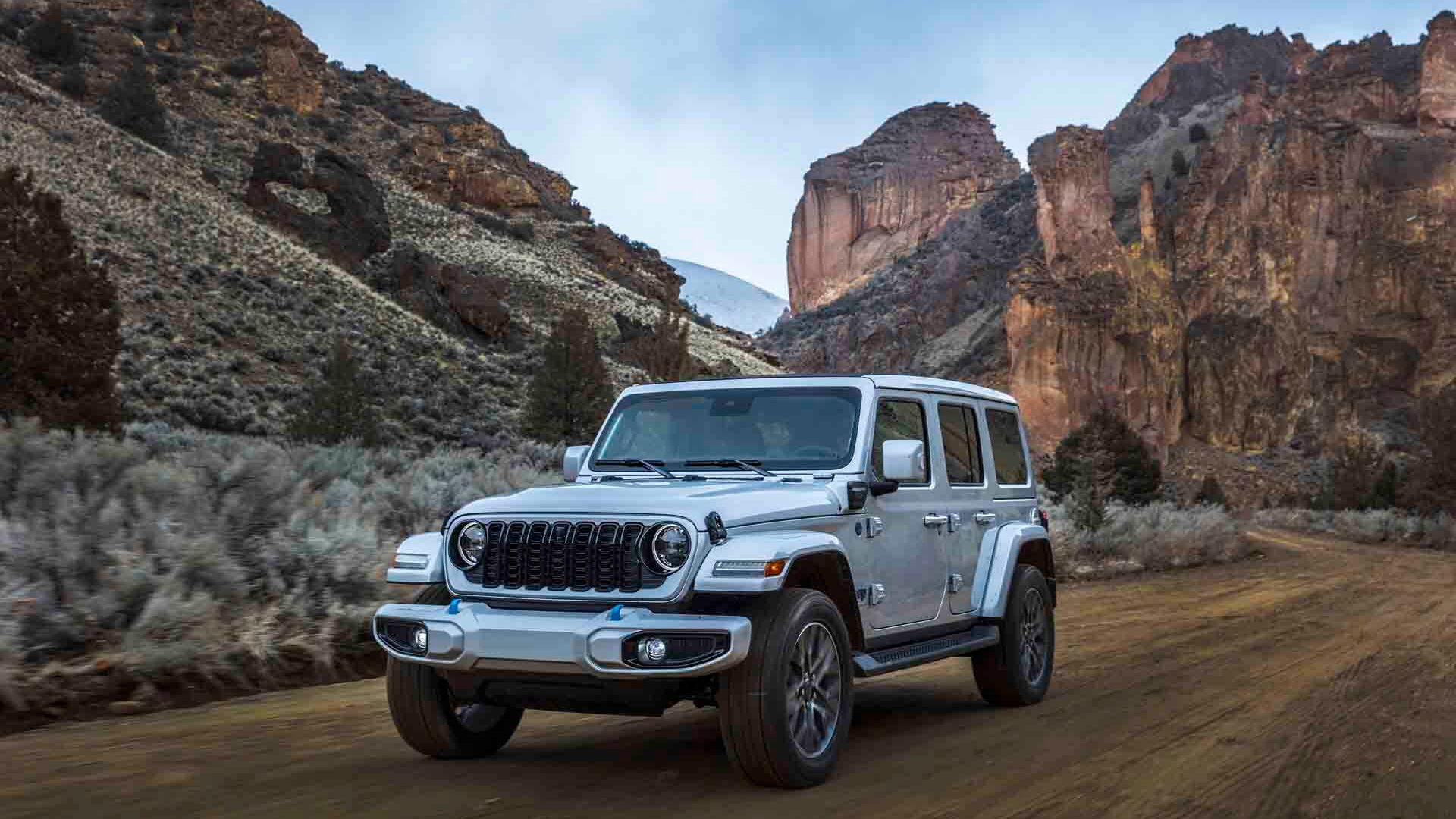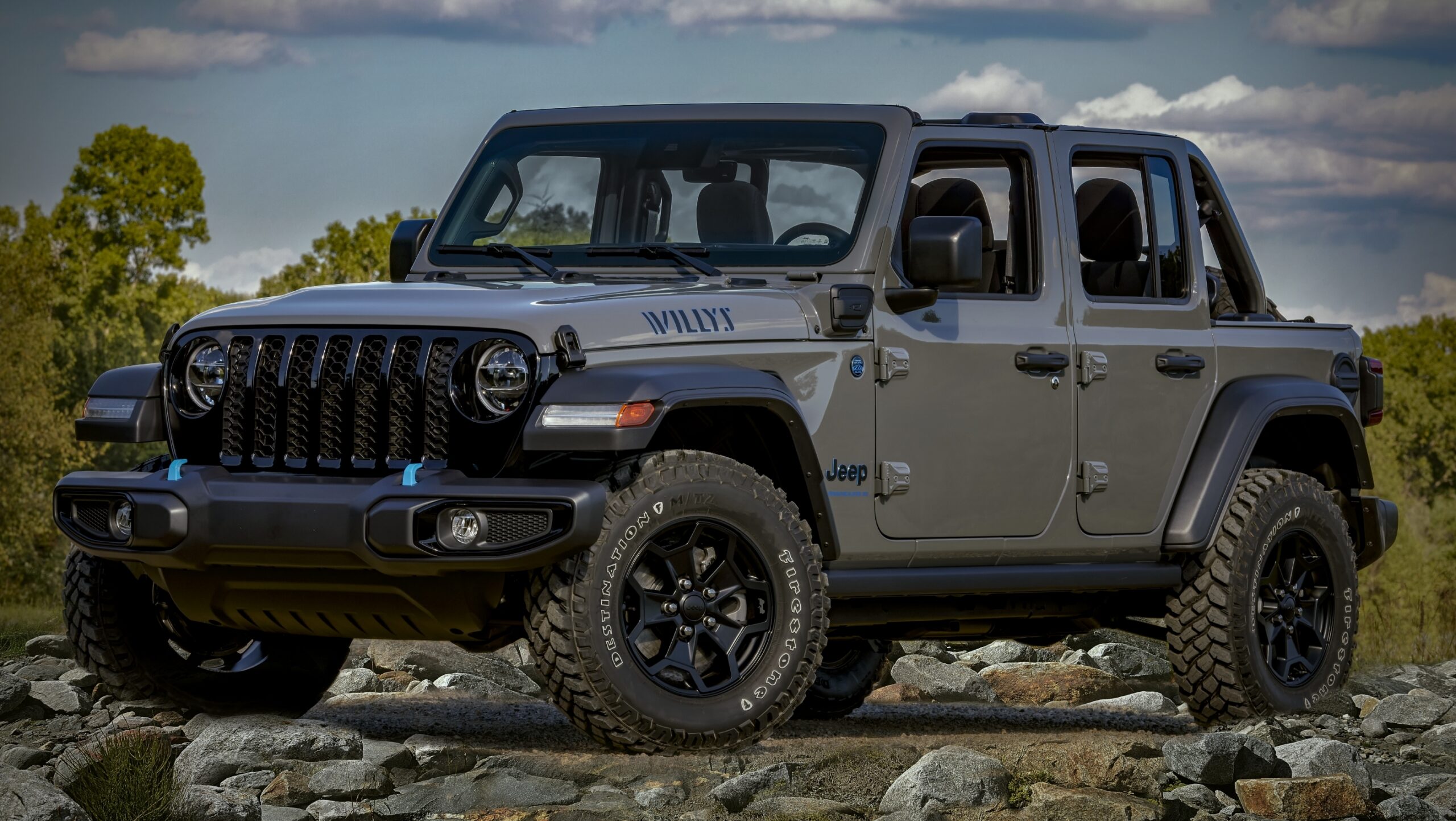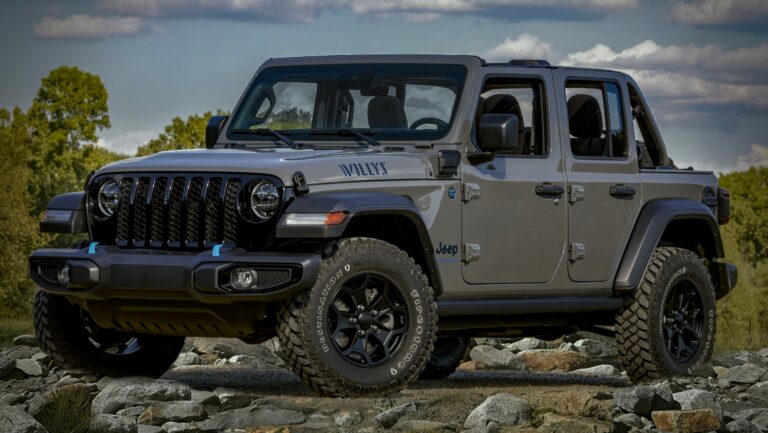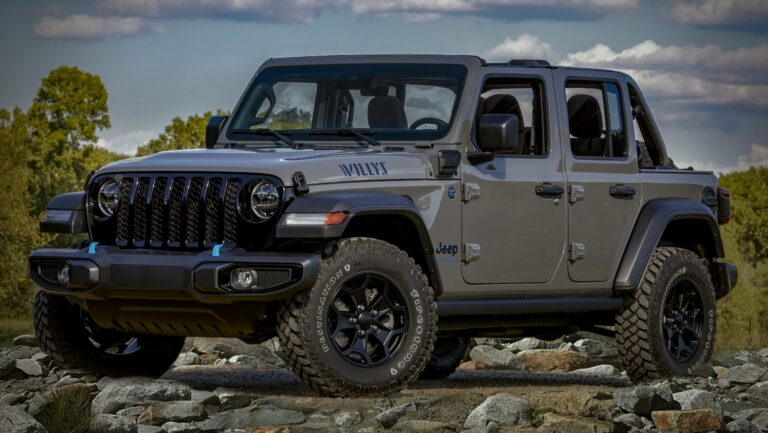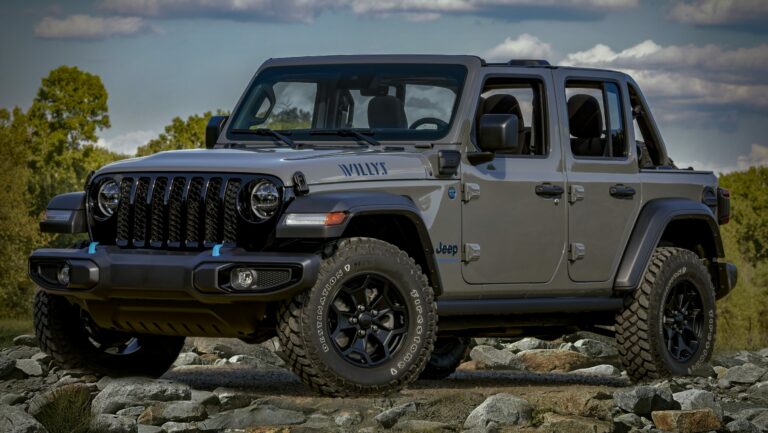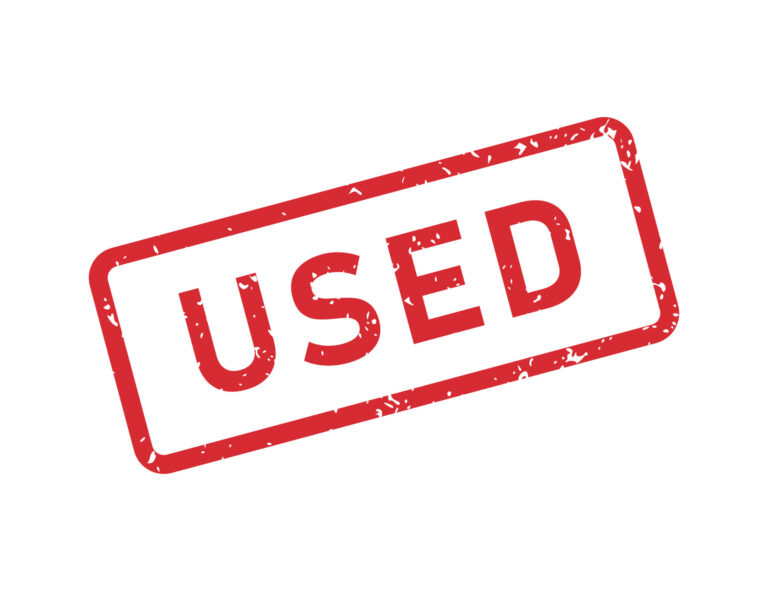The Apex Predator Unleashed: Exploring the Jeep SRT Trackhawk 1000 HP
The Apex Predator Unleashed: Exploring the Jeep SRT Trackhawk 1000 HP jeeps.truckstrend.com
In the realm of high-performance SUVs, few names command as much respect and awe as the Jeep Grand Cherokee SRT Trackhawk. Born with a supercharged heart derived from the Dodge Hellcat, the factory Trackhawk already boasts a staggering 707 horsepower, making it one of the most potent production SUVs ever created. But for a select few, 707 horsepower is merely a starting point. Welcome to the world of the Jeep SRT Trackhawk 1000 HP – a machine that transcends mere performance, entering the territory of automotive legend.
A 1000 HP Trackhawk isn’t just a car; it’s a statement. It represents the pinnacle of aftermarket tuning, a testament to engineering prowess, and an exhilarating, often brutal, driving experience. This article delves deep into what it takes to transform an already formidable SUV into an untamed beast, exploring the modifications, considerations, and the sheer thrill of piloting a vehicle that redefines the meaning of speed and power in an SUV package.
The Apex Predator Unleashed: Exploring the Jeep SRT Trackhawk 1000 HP
The Untamed Beast: What is a 1000 HP Trackhawk?
The journey to 1000 horsepower begins with the factory Jeep Grand Cherokee SRT Trackhawk. Launched in 2018, it quickly established itself as a drag-strip terror and a street monster, thanks to its 6.2-liter supercharged HEMI V8 engine. With its all-wheel-drive system, it could launch from 0-60 mph in a breathtaking 3.5 seconds, humbling many sports cars.
However, the "1000 HP" designation signifies a significant leap beyond factory specifications. This power level is not achieved by Jeep themselves but through extensive and often costly aftermarket modifications performed by specialized tuning shops and experienced individuals. The goal is simple: to extract every ounce of potential from the Hellcat engine, pushing its boundaries to deliver supercar-rivalling acceleration in the body of a family-friendly SUV. Why push for such extreme power? For many enthusiasts, it’s about pushing limits, dominating the drag strip, achieving unparalleled street presence, and experiencing a level of raw power that few other vehicles can offer.
Achieving the Millennium Mark: Key Modifications for 1000 HP
Reaching 1000 horsepower reliably in a Trackhawk requires a comprehensive approach, addressing not just the engine’s power output but also its ability to sustain that power and transfer it effectively to the wheels. This isn’t a simple bolt-on affair; it involves upgrading virtually every critical component.
1. Engine Enhancements: The Heart of the Beast
- Supercharger Upgrade: The factory IHI supercharger is good, but for 1000 HP, a larger unit is typically required. Popular choices include 3.0L or 3.8L Whipple or Kenne Bell superchargers. These larger blowers can move significantly more air, generating higher boost pressures necessary for the power target. This often includes upgrading the supercharger pulley for increased rotational speed.
- Fuel System Overhaul: More air requires more fuel. The stock fuel system is inadequate for 1000 HP. Upgrades typically include larger fuel injectors (often 1300cc-2000cc), dual high-flow fuel pumps (e.g., Fore Innovations or similar), larger fuel lines, and a high-performance fuel pressure regulator. E85 compatibility is often pursued as ethanol provides a higher octane rating and a cooling effect, allowing for more aggressive tuning.
- Forged Internals: This is arguably the most crucial and expensive modification for reliability. The factory pistons and connecting rods are not designed for sustained 1000 HP stress. Installing forged pistons, connecting rods, and often a stronger crankshaft (or at least aftermarket main/rod bearings) is essential to prevent catastrophic engine failure. Head studs are also critical to ensure the cylinder heads remain sealed under extreme cylinder pressures.
- Camshaft Upgrade: A performance camshaft with a more aggressive lift and duration profile optimizes valve timing for higher RPM power production and increased airflow, complementing the larger supercharger.
- Larger Throttle Body: A larger throttle body (e.g., 105mm or 112mm) allows for more unrestricted airflow into the supercharger, reducing a bottleneck in the intake system.
- Improved Cooling: Generating 1000 HP produces immense heat. Upgraded heat exchangers (for the supercharger intercooler), larger radiators, and auxiliary cooling systems are vital to keep intake air temperatures (IATs) and engine coolant temperatures in check, preventing power loss due to heat soak and protecting engine components.
- Exhaust System: While not directly contributing to 1000 HP, a free-flowing exhaust system, typically starting with long-tube headers and a full cat-back system, reduces back pressure, allowing the engine to breathe more efficiently and producing that iconic, aggressive HEMI roar.
![]()

2. Drivetrain and Transmission Upgrades: Putting Power to the Ground
- Transmission Reinforcement: The ZF 8HP90 transmission, while robust, will require upgrades to handle the massive torque generated. This typically involves reinforced clutch packs, a stronger valve body, and often a complete "built" transmission from specialists.
- Driveshaft and Axle Upgrades: The stock driveshaft and half-shafts are prone to breaking under the immense torque and shock loads of 1000 HP launches. Upgraded, stronger units made from chromoly steel or carbon fiber are a common necessity.
3. Engine Management (Tuning): The Brains Behind the Brawn
- Custom ECU Calibration: All these hardware modifications are useless without a custom engine tune. This is where a highly skilled and experienced tuner comes in. Using specialized software and often dyno testing, the tuner recalibrates the Engine Control Unit (ECU) to optimize fuel delivery, ignition timing, boost pressure, transmission shift points, and other parameters for the new hardware and desired power output. This is a critical step for both performance and reliability.
Beyond Power: Handling and Braking for a 1000 HP SUV
While the focus is often on horsepower, a 1000 HP Trackhawk needs more than just straight-line speed. It needs to be able to stop and handle the immense forces it generates.
- Suspension Enhancements: To manage the increased power and improve stability, many owners opt for upgraded suspension components. Lowering springs or adjustable coilovers can reduce body roll and lower the center of gravity, enhancing handling dynamics. Upgraded sway bars further improve cornering stability.
- Tires: The stock all-season tires are completely inadequate for 1000 HP. High-performance summer tires are a minimum, but for drag racing, dedicated drag radial tires are essential to maximize traction off the line.
- Brakes: The factory Brembo braking system on the Trackhawk is already impressive, but for repeated high-speed stops or track use, upgraded brake pads, rotors (often two-piece slotted or drilled), and high-temperature brake fluid can provide improved stopping power and fade resistance.
The Driving Experience: What to Expect from a 1000 HP Trackhawk
Piloting a 1000 HP Trackhawk is an experience unlike any other.
- Brutal Acceleration: The sensation of being slammed back into your seat as all four wheels claw for traction is addictive. 0-60 mph times can drop into the 2-second range, rivaling hypercars.
- Aural Symphony: The supercharger whine becomes a banshee shriek under wide-open throttle, accompanied by the deep, resonant roar of the HEMI V8 and the crackle of the exhaust. It’s an auditory assault that announces your presence long before you arrive.
- Demanding but Rewarding: While incredibly fast, a 1000 HP Trackhawk can be demanding to drive. Managing traction, especially in less-than-ideal conditions, requires a delicate right foot. However, the sheer exhilaration and the feeling of controlling such immense power are incredibly rewarding.
- Fuel Consumption: Expect single-digit MPG figures when you unleash its full potential. This is not a fuel-efficient vehicle.
Important Considerations and Challenges
Before embarking on the journey to 1000 HP, prospective owners must be aware of significant considerations:
- Cost: The financial investment is substantial. Beyond the purchase price of the base Trackhawk, modifications can easily add tens of thousands of dollars, as detailed in the price table below.
- Reliability: While proper modifications improve reliability at this power level, a 1000 HP engine is inherently under more stress than a stock unit. Components will wear faster, and regular, specialized maintenance is crucial. Expect more frequent oil changes, drivetrain inspections, and potential component replacements.
- Maintenance: Maintenance becomes more frequent and specialized. Finding a reputable shop with experience in high-horsepower builds is paramount.
- Insurance: Insurance premiums will likely be higher due to the vehicle’s value and performance capabilities.
- Legality/Emissions: Some modifications, particularly those affecting the catalytic converters or emissions systems, may not be street legal in certain regions or could cause issues during vehicle inspections. Always check local regulations.
- Finding a Reputable Tuner/Shop: This is perhaps the most critical factor. A poorly executed build or tune can lead to catastrophic engine failure. Research, reviews, and a proven track record are essential when choosing a tuner.
Tips for Trackhawk Owners Aspiring for 1000 HP
- Start with a Solid Base: Ensure your Trackhawk is in excellent mechanical condition before starting modifications. Address any existing issues.
- Research Thoroughly: Understand every component, its function, and why it’s necessary. Don’t rush into decisions.
- Budget Realistically: Account for all parts, labor, tuning, and potential unforeseen expenses. Don’t cut corners on critical components.
- Choose Wisely: Select a reputable tuning shop with extensive experience in high-horsepower Hellcat/Trackhawk builds. Ask for references and view their previous work.
- Understand the Risks: Be aware that pushing an engine to such extreme levels carries inherent risks of increased wear and potential failure, even with the best components and tuning.
- Prioritize Reliability: Focus on forged internals, a robust fuel system, and adequate cooling before chasing peak power numbers. Reliability ensures longevity.
- Join Communities: Engage with online forums and owner groups. They are invaluable sources of information, advice, and recommendations from experienced owners.
Jeep SRT Trackhawk 1000 HP: Estimated Price Table
Achieving 1000 HP in a Trackhawk is an aftermarket endeavor, meaning the cost is highly variable depending on the specific parts chosen, the labor rates of the tuning shop, and the condition of the base vehicle. Below is an estimated breakdown:
| Component/Service | Estimated Cost (USD) | Notes |
|---|---|---|
| Base Vehicle (Used Jeep Grand Cherokee Trackhawk) | $60,000 – $90,000+ | Price depends heavily on year, mileage, condition, and options. New models are no longer produced. |
| Engine Forged Internals Package | $8,000 – $15,000 | Includes forged pistons, connecting rods, bearings, head studs. Absolutely essential for reliability at 1000 HP. |
| Larger Supercharger (e.g., Whipple 3.0L/3.8L, Kenne Bell) | $7,000 – $12,000 | Includes the supercharger unit, manifold, and pulleys. |
| Upgraded Fuel System | $2,000 – $4,000 | Larger injectors (e.g., 1300cc-2000cc), dual fuel pumps, fuel lines, regulator. Critical for adequate fuel delivery. |
| Upgraded Cooling System | $1,500 – $3,000 | Larger heat exchanger, additional reservoirs, upgraded intercooler pump. Manages critical temperatures. |
| Long-Tube Headers & Full Exhaust | $2,000 – $5,000 | Improves exhaust flow, contributes to sound. |
| Performance Camshaft & Valvetrain | $1,500 – $3,000 | Optimizes valve timing for higher power. |
| Transmission Upgrades | $3,000 – $8,000 | Reinforced clutch packs, valve body, potentially a "built" transmission. Handles increased torque. |
| Driveshaft & Axle Reinforcement | $1,500 – $3,000 | Stronger components to prevent breakage under extreme launches. |
| Custom ECU Tuning (Dyno & Street) | $1,500 – $3,500 | Specialized tuning is paramount for integrating all modifications and ensuring optimal performance and safety. |
| Labor (Installation of all components) | $5,000 – $15,000+ | Varies significantly based on shop rates, complexity of the build, and regional labor costs. |
| Miscellaneous (Oil Catch Can, Spark Plugs, Sensors, Fluids, etc.) | $500 – $1,500 | Essential smaller components and fluids. |
| Estimated Total for 1000 HP Modifications (Excluding Base Car) | $34,500 – $70,000+ | This range reflects the variability in part choices (brand, quality) and labor. |
| TOTAL ESTIMATED COST (Base Car + Mods) | $94,500 – $160,000+ | This wide range highlights the custom nature of these builds. Always get detailed quotes. |
Frequently Asked Questions (FAQ) about the 1000 HP Trackhawk
Q1: Is a 1000 HP Trackhawk safe for daily driving?
A1: While technically possible, it’s not ideal. The increased power puts more stress on components, requires more frequent maintenance, and fuel consumption is extremely high. It’s more suited for spirited weekend drives or track use.
Q2: How much does it cost to get a Trackhawk to 1000 HP?
A2: Including the cost of a used base Trackhawk and all necessary modifications, expect to spend anywhere from $95,000 to over $160,000. The modification costs alone can range from $35,000 to $70,000+.
Q3: What’s the 0-60 mph time for a 1000 HP Trackhawk?
A3: With proper tires and ideal conditions, a 1000 HP Trackhawk can achieve 0-60 mph times in the low 2-second range (e.g., 2.3-2.6 seconds), putting it in supercar territory.
Q4: What are the main differences between a stock Trackhawk and a 1000 HP version?
A4: The primary difference is raw power and acceleration. A 1000 HP version features extensive engine internals, a larger supercharger, upgraded fuel and cooling systems, and reinforced drivetrain components not present in the stock 707 HP model. The driving experience is also far more intense.
Q5: Does modifying my Trackhawk to 1000 HP void the factory warranty?
A5: Absolutely. Any significant aftermarket modifications, especially to the engine and drivetrain, will void the manufacturer’s warranty. This is a risk owners must accept.
Q6: Can I achieve 1000 HP reliably?
A6: "Reliably" is relative at this power level. With the right forged internal components, a comprehensive fuel system, adequate cooling, and an expert tune, the engine can withstand 1000 HP for significant periods. However, wear and tear will be accelerated, and diligent maintenance is crucial. Cutting corners will severely compromise reliability.
Q7: Where can I get these modifications done?
A7: It is crucial to choose a highly reputable and experienced performance shop specializing in modern HEMI builds. Look for shops with a proven track record, positive reviews, and the necessary equipment (like an in-house dyno) for proper tuning.
Concluding Summary
The Jeep SRT Trackhawk 1000 HP stands as a monument to automotive excess and engineering ambition. It transforms an already incredible SUV into a drag-strip dominator and a street legend, offering a driving experience that is both terrifyingly fast and utterly exhilarating. While the journey to 1000 horsepower demands a significant financial commitment, meticulous planning, and ongoing maintenance, for those who dare, the reward is an unparalleled blend of SUV practicality and hypercar performance. It’s a testament to what’s possible when passion meets power, solidifying the Trackhawk’s legacy as the ultimate apex predator in the SUV kingdom.
